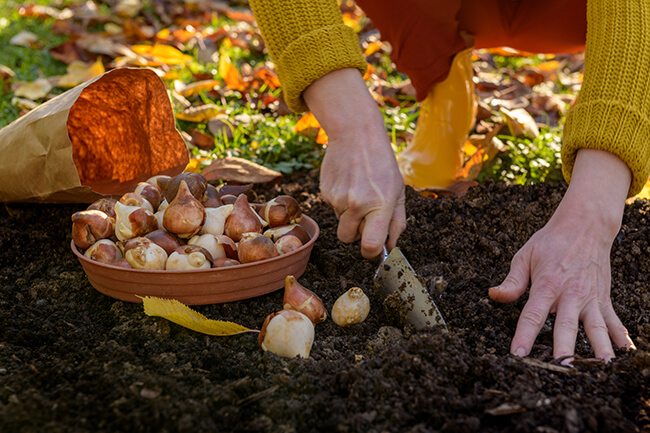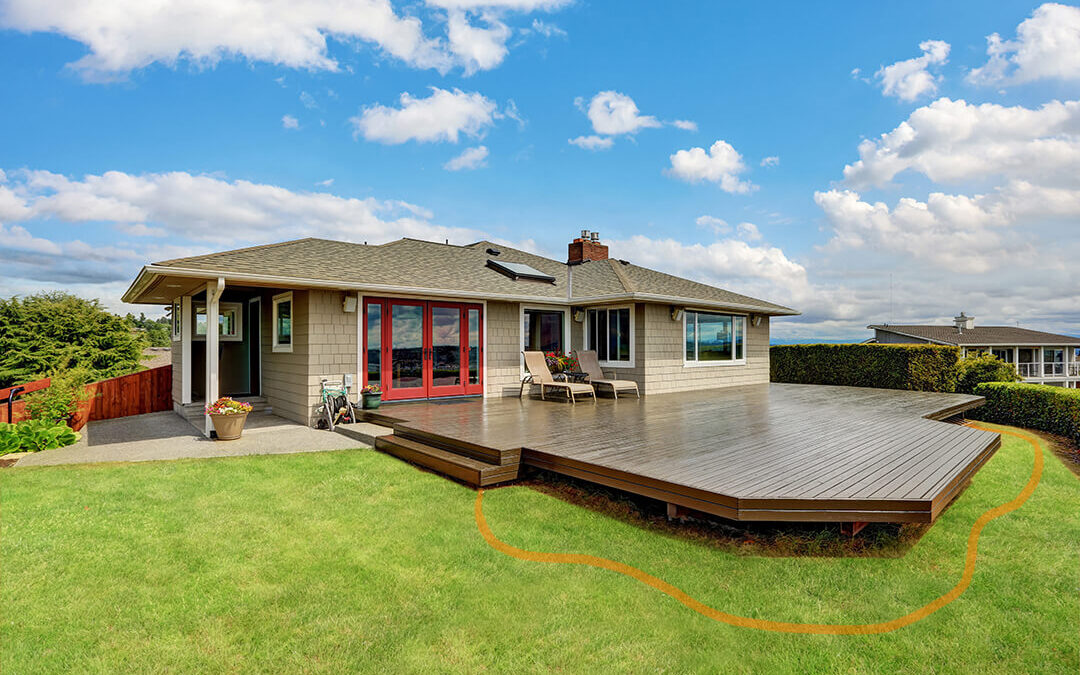Fall seem like the time to wrap things up in your yard, and it is. But it’s also the perfect time to start planning for next year’s landscaping projects. Whether you’re improving your existing landscape or starting from scratch in a new yard, autumn gives you a head start that can save you time, money, and stress come spring. Here’s how you can use the fall season to plan your next landscaping project.
Evaluate Your Current Landscape
If you have existing landscaping, take a good look at your yard before diving into new ideas. What worked well this year, and what didn’t? Maybe some plants didn’t thrive, or certain areas look bare. Make notes about which plants or features you loved, and which ones you could do without. Fall is the perfect time to evaluate because you can see how your garden has developed over the season.

Tip: Take pictures of your yard from different angles so you can refer back to them when you start planning.
Prepare the Soil
Healthy soil is the foundation of a beautiful landscape. In the fall, you can take advantage of cooler weather to amend your soil. Whether your soil needs more organic matter, better drainage, or a pH adjustment, fall is an excellent time to start adding compost or other amendments. This way, the nutrients have all winter to break down and enrich the soil.
Tip: Get a soil test in the fall to see exactly what your soil needs. It’ll give you time to add the right amendments for healthy growth in spring.
Plant Fall Bulbs
 Want a splash of colour first thing in the spring? Spring-blooming perennials are excellent and abundant, and there’s still time to plant them now. Fall is also the time to plant spring-blooming bulbs like tulips, daffodils, hyacinths and crocuses. Bulbs need the cold months to develop, so planting them now ensures that your garden bursts into life early in the year.
Want a splash of colour first thing in the spring? Spring-blooming perennials are excellent and abundant, and there’s still time to plant them now. Fall is also the time to plant spring-blooming bulbs like tulips, daffodils, hyacinths and crocuses. Bulbs need the cold months to develop, so planting them now ensures that your garden bursts into life early in the year.
Tip: Plant bulbs in clusters or drifts to create more visual impact when they bloom.
Map Out New Garden Beds
If you’re starting from scratch or adding new garden beds, fall is a great time to map out where they’ll go. You can use stakes and string to visualize the space, or even lay down cardboard over grass to smother it in preparation for spring planting. Doing the groundwork now will make it easier to jump right in when the weather warms up.
Tip: Think about sun exposure, drainage, and how plants will interact with each other when planning out new beds.
Prune and Trim Existing Plants
Some trees and shrubs can benefit from a little pruning in the fall. Cleaning up dead or diseased branches will encourage healthy growth next year, while also making your yard look neat and tidy through the winter. However, be cautious—some plants are better pruned in the spring, so do your research to avoid damaging them.
Tip: Remove any spent annuals and clean up fallen leaves to prevent pests and diseases from overwintering in your garden.
Mulch for Protection
Mulching is one of the best things you can do for your garden before winter sets in. A layer of mulch helps regulate soil temperature, retains moisture, and protects plant roots from freezing. This gives your plants a better chance of thriving come spring. Spread a few inches of mulch around your trees, shrubs, and perennials to insulate them through the colder months.
 Tip: Use organic mulch like wood chips or shredded leaves, which will also break down and improve your soil over time.
Tip: Use organic mulch like wood chips or shredded leaves, which will also break down and improve your soil over time.
Plan Hardscaping Projects
Fall is also the ideal time to think about hardscaping projects—anything from patios and walkways to retaining walls and garden structures. You can use the cooler fall months to plan out where these elements will go and even get started on installation if the weather cooperates. If you wait until spring, landscapers may be fully booked, so get on their schedule early.
Tip: Consider adding functional yet beautiful features like stone paths or a patio to elevate your garden’s design.
Research Plants for Next Year
Fall is the time to do your homework. Spend time researching plants that thrive in your climate and soil conditions. Look for native plants, drought-tolerant species, or perennials that come back year after year with minimal maintenance. By making plant choices now, you’ll be ready to buy them when nurseries open in the spring.
Tip: Consider the long-term growth of trees and shrubs when selecting plants. What looks like a perfect fit now might outgrow the space in a few years.
Establish a Budget
 Planning in the fall gives you time to save up for any larger landscaping projects. Whether you need to invest in plants, tools, or professional help, having a clear landscaping budget will make the process smoother and help you prioritize the most important projects.
Planning in the fall gives you time to save up for any larger landscaping projects. Whether you need to invest in plants, tools, or professional help, having a clear landscaping budget will make the process smoother and help you prioritize the most important projects.
Tip: Consider breaking larger projects into phases to spread out the cost and labour over time.
Winterize Your Garden Tools
While you’re preparing your yard, don’t forget about your tools! Clean and store garden tools properly so they’re ready to go in the spring. Sharpen blades, oil moving parts, and store them in a dry place to prevent rust. You’ll thank yourself when spring rolls around and everything is in top condition.
By taking these steps in the fall, you’re not only setting the stage for a successful spring but also giving yourself the time to plan, prepare, and dream about your perfect landscape. And of course, if this all sounds great, but you’re not much of a green thumb, give us a call to discuss how our professional landscaping services can help make your goals a reality next year.

